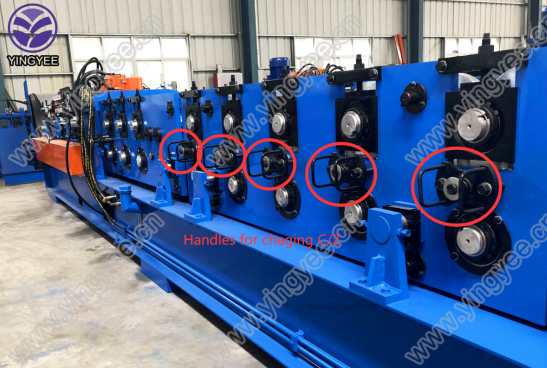
Understanding Strut Channel Roll Forming
In the realm of modern construction and manufacturing, the need for efficient and versatile structural components is paramount. One such component that has gained popularity is the strut channel, often referred to as channel framing or strut systems. The innovative process of roll forming has become the preferred method for producing strut channels, enabling manufacturers to deliver high-quality products that meet the demands of various applications.
What is Strut Channel?
Strut channels are elongated metal profiles with a C or U shape, typically made from steel or aluminum. They serve as structural supports, providing a framework for various building projects, including HVAC systems, electrical conduits, and plumbing lines. Strut channels are known for their strength, durability, and adaptability, making them an ideal choice for both commercial and residential applications.
The Roll Forming Process
Roll forming is a continuous bending operation in which long strips of metal are gradually shaped into specific profiles. This process is particularly beneficial for producing strut channels due to its efficiency and ability to create uniform products with precise dimensions.
1. Material Selection The process begins with selecting the appropriate material. Steel, particularly galvanized steel, is commonly used for strut channels due to its strength and resistance to corrosion. Aluminum can also be used for lighter applications.
2. Feeding and Entry The flat metal strip is fed into a series of rollers, positioned sequentially. Each roller is designed to bend the metal slightly, guiding it towards the desired shape.
3. Roll Configuration The roll forming machine consists of multiple sets of rollers, each carefully engineered to create specific bends. As the strip passes through each set of rollers, it becomes progressively shaped into the strut channel profile.
4. Cutting and Finishing Once the strut channel has been fully formed, it is cut to the required lengths. Additional processes, such as punching holes or adding flanges, can also take place at this stage to enhance functionality and versatility.
5. Quality Control Throughout the roll forming process, rigorous quality control measures are implemented to ensure that the final product meets industry standards. This includes checks for dimensional accuracy, surface finish, and structural integrity.

Advantages of Roll Forming Strut Channels
The roll forming process offers several advantages over traditional manufacturing methods, making it the preferred choice for strut channel production
- Cost-Effectiveness Roll forming minimizes material waste, allowing manufacturers to optimize their resources. The production process is highly efficient, which reduces labor costs and overall manufacturing expenses.
- Uniformity and Precision The process produces strut channels with consistent dimensions and profiles, essential for maintaining structural integrity in construction applications.
- Customization Roll forming can easily adapt to produce custom shapes and sizes to meet specific project requirements without significant redesign costs or extended lead times.
- High Production Volumes The continuous nature of roll forming enables manufacturers to produce large volumes of strut channels quickly, catering to high-demand markets without compromising quality.
Applications of Strut Channels
Strut channels find a wide range of applications across various industries. In construction, they are commonly used in building frameworks, supporting ceilings, and mounting electrical conduits. In the HVAC industry, strut channels can support ductwork and other equipment. Their adaptability also makes them a popular choice in manufacturing settings for general support structures, assembly lines, and equipment mounts.
Conclusion
The combination of strut channels and roll forming technology represents a significant advancement in structural manufacturing. By utilizing this efficient process, manufacturers can produce high-quality, customized products that meet the diverse needs of various industries. As construction and manufacturing continue to evolve, the demand for such versatile and reliable components will undoubtedly grow, solidifying the key role of strut channels in the modern industrial landscape. Through ongoing innovation in roll forming techniques, the future of structural support systems appears bright, with endless possibilities for creativity, efficiency, and functionality.